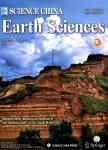Integrated research methods in watershed science
Integrated research methods in watershed science作者机构:Cold and Arid Regions Environmental and Engineering Research Institute Chinese Academy of Sciences
出 版 物:《Science China Earth Sciences》 (中国科学(地球科学英文版))
年 卷 期:2015年第58卷第7期
页 面:1159-1168页
核心收录:
学科分类:08[工学] 081501[工学-水文学及水资源] 0708[理学-地球物理学] 0815[工学-水利工程] 0704[理学-天文学]
基 金:supported by Prof.Chen Fahu represented by this paper was funded by the Major Research Plan of the National Natural Science Foundation of China(Grant Nos.91225302,91425303) the Cross-disciplinary Collaborative Teams Program for Science,Technology,and Innovation of the Chinese Academy of Sciences
主 题:流域科学 综合研究方法 地球系统科学 地面系统 复杂系统 非结构化问题 基础设施 协同进化
摘 要:We discuss the concepts, research methods, and infrastructure of watershed science. A watershed is a basic unit and possesses all of the complexities of the land surface system, thereby making it the best unit for practicing Earth system science. Watershed science is an Earth system science practiced on a watershed scale, and it has developed rapidly over the previous two decades. The goal of watershed science is to understand and predict the behavior of complex watershed systems and support the sustainable development of watersheds. However, watershed science confronts the difficulties of understanding complex systems, achieving scale transformation, and simulating the co-evolution of the human-nature system. These difficulties are fundamentally methodological challenges. Therefore, we discuss the research methods of watershed science, which include the self-organized complex system method, the upscaling method dominated by statistical mechanics, Darwinian approaches based on selection and evolutionary principles, hydro-economic and eco-economic methods that emphasize the human-nature system co-evolution, and meta-synthesis for addressing unstructured problems. These approaches together can create a bridge between holism and reductionism and work as a group of operational methods to combine hard and soft integrations and capture all aspects of both natural and human systems. These methods will contribute to the maturation of watershed science and to a methodology that can be used throughout land-surface systems science.



